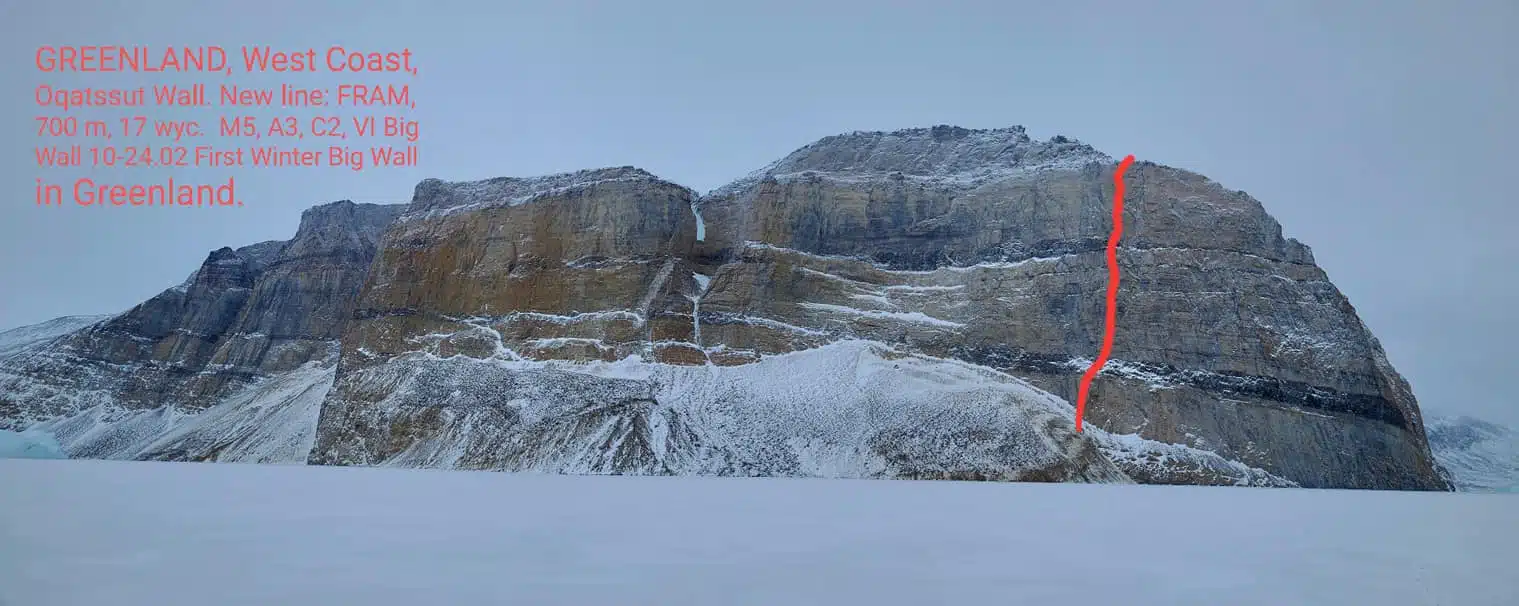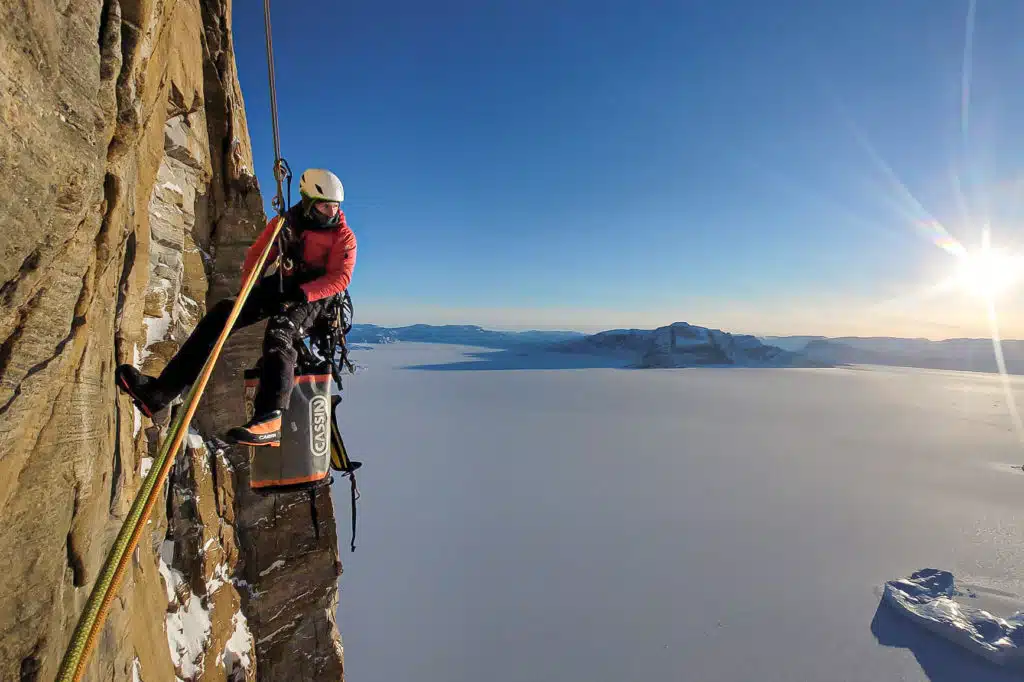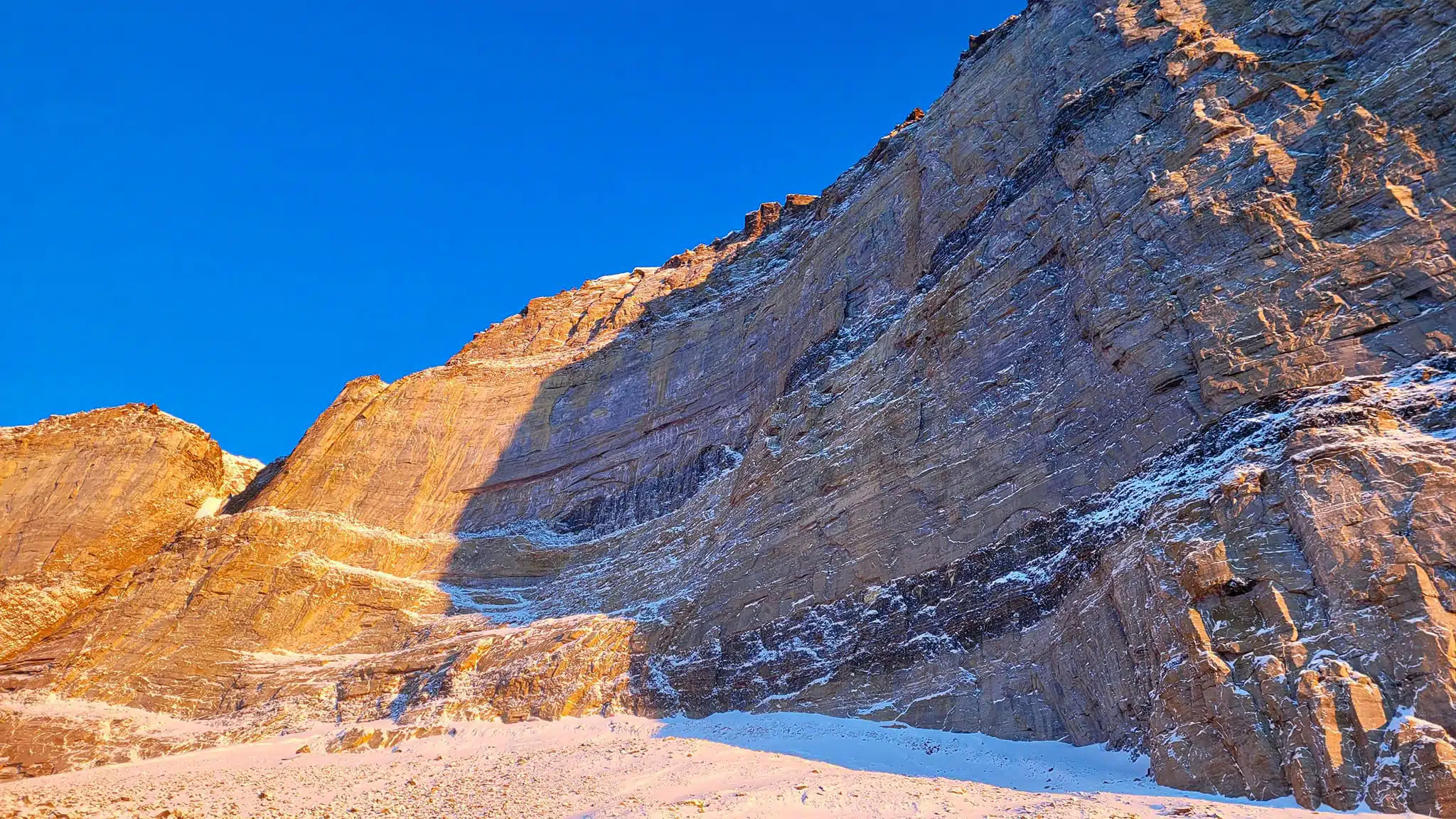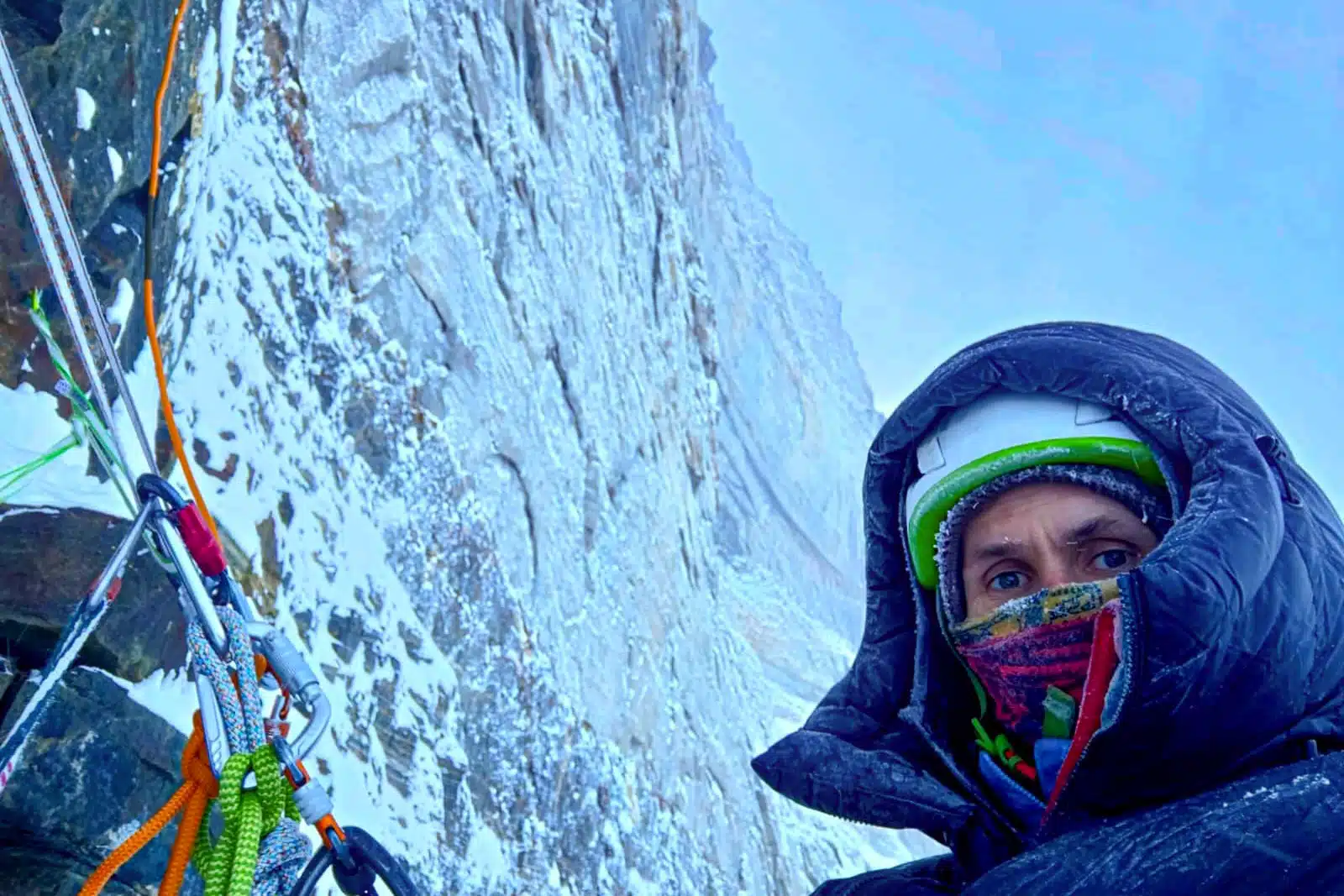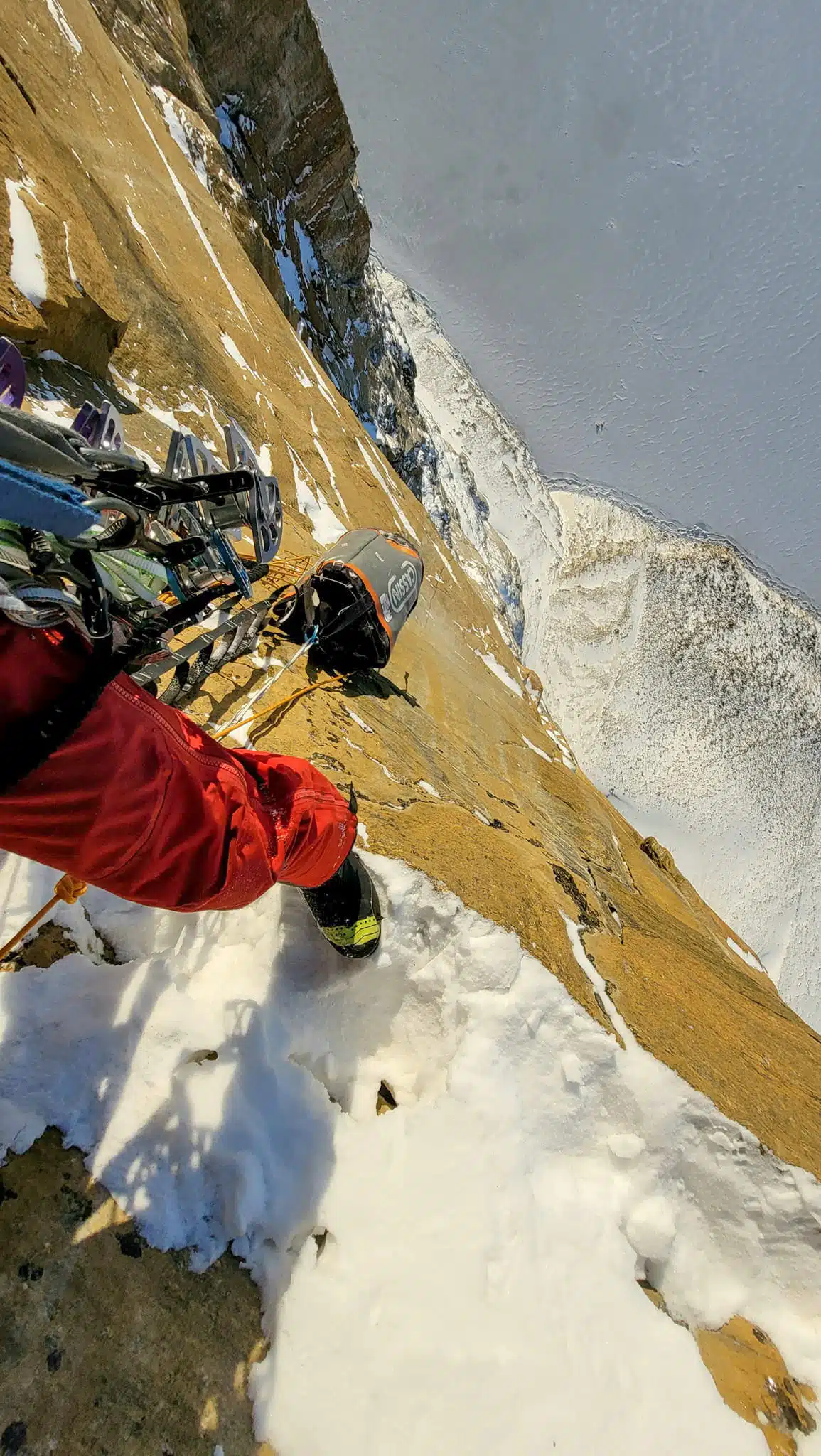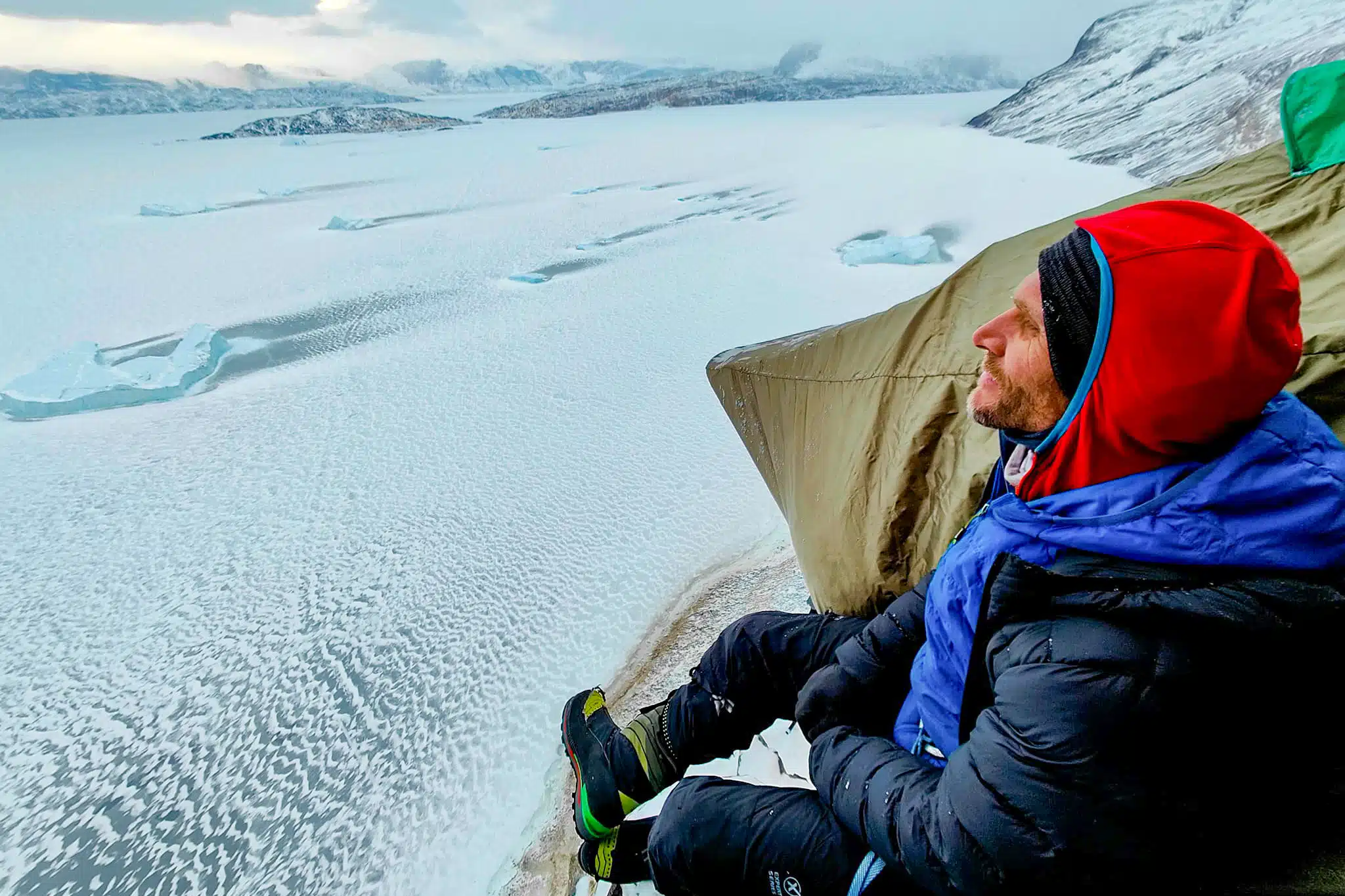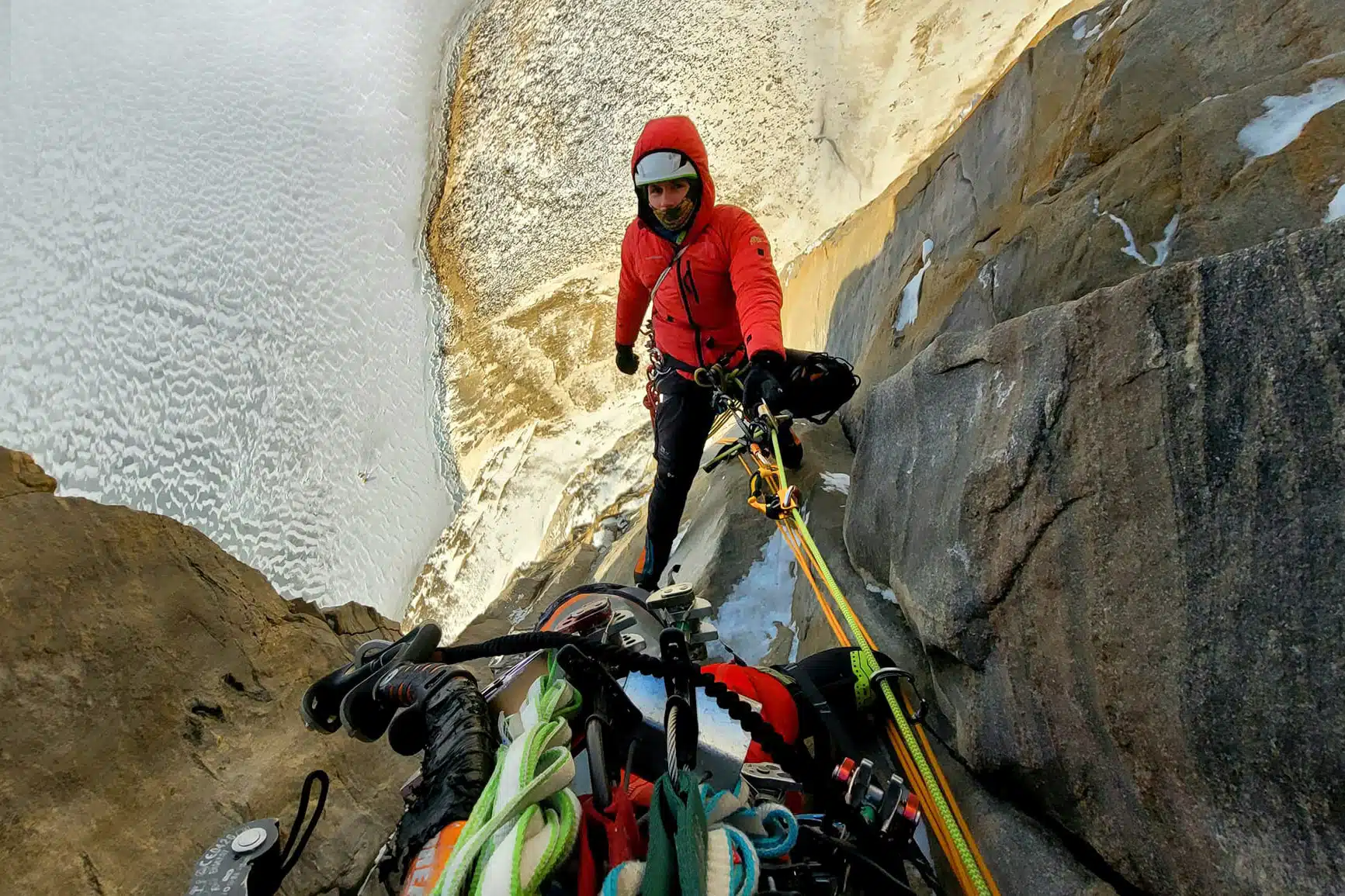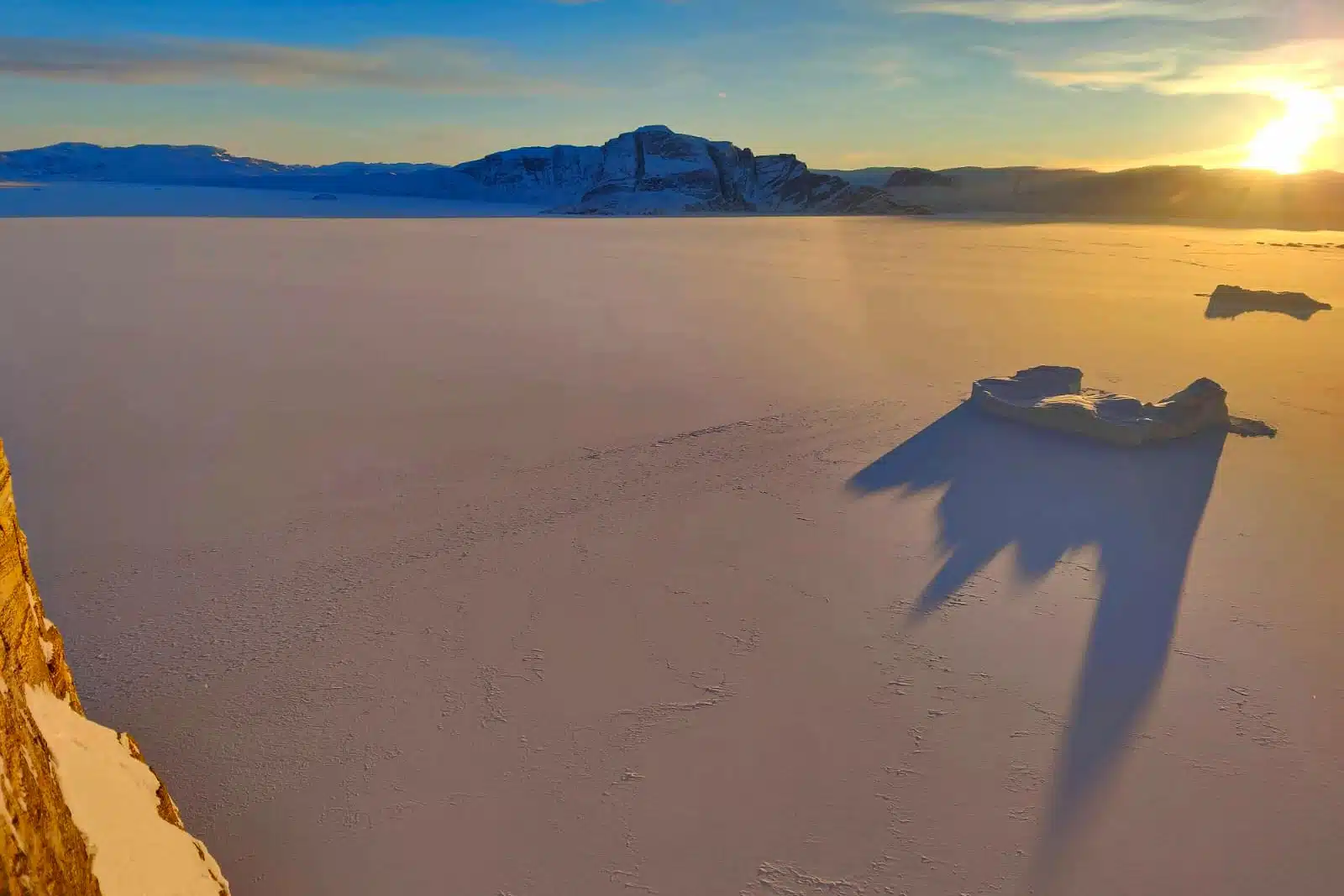In fourteen days of February, Poles Marcin Tomaszewski and Pawel Haldas have climbed a 700-meter big wall on the west coast of Greenland. This is the first winter big wall ever climbed in Greenland. Marcin wrote the story.
Our long-planned expedition with Pawel Haldas began with a complete change of plans. The tactics we had set up and the areas where we were going to look for our walls landed in the trash a moment after arrival. The ice cover on the fjords is not constant. It is influenced both by the air temperature and by the wind pushing warm water from the Baffin Sea into its depths, which in turn locally melts its cover down to zero. This is what happened near our would-be walls on Storoen Island, on the Uummannaq and Agpat Island. A local guide advised not to move in those areas. We realised that the key to success in this case was speed, especially as the weather conditions and particularly the temperature in Greenland varies enormously in winter.
On the second day, after arriving in the village by helicopter, thanks to the help of the local Inuit people, who were very friendly to us, especially Anton, we set off on a reconnaissance into the fjords towards the permafrost. Talking to local hunters, we learned about the existence of rock walls of unknown size and construction that they had passed during their hunting expeditions. We really wanted to get a close look at them which was possible thanks to the snowmobiles. In this case, the local fishermen’s knowledge of the current state of the ice cover came in handy.
On that day we saw plenty of interesting alpine-type massifs, a real climbing Eldorado and, above all, a beautiful exposed rock wall about 6 kilometres wide and of unknown height. The decision was made in silence, we fell in love with this piece of frozen rock.
In the first days of action we experienced values of about -40 degrees celsius
On 9 February we pitched our tents on the surface of the fjord, attaching them to the ice with screws. We got ice for cooking from the nearby ice floe as both the snow and the fjord surface were salty. The next day we packed our gear and headed for the wall. And so our adventure began. It took us a total of 14 days to set the route. We fixed the lower parts of the exposed wall in good weather, but as it turned out a while later, the sun in Greenland also means very low temperatures. In the first days of action we experienced values of about -40 degrees C. As we found out, the locals add a few more degrees to the forecast temperatures in the area due to the proximity of the cooling air of the ice cap.
On the first front during our climb, we fought mainly against the cold. After the first few days of action and one during which we decided to wait out a frost wave (-41 degrees C or lower), which is rare even in this region, we fixed part of the wall up to the portaledge bivouac site. The climbing in the lower part of the wall was not technically difficult but very demanding due to the loose rock and specific rock formations. In this area, sedimentary, metamorphic rocks prevail. The black bands of rock enveloping the wall at two levels meant poorer quality granite and a high risk of spontaneous falling fragments.
Extreme cold and short days
The short 7-hour day meant that we were unable to complete more than one or two pitches a day, either by aid climbing or free climbing up to M5. Climbing at night was out of the question due to the conditions and temperatures. We agreed that the priority was not to get frostbite, not to cool down beyond the acceptable limit and to complete the route even if it would take us more days. At that time, as well as until the end of the expedition, every day we were on the verge of frostbite on our toes and hands, which every now and then lost feeling and turned white. A moment’s carelessness or negligence would have ended our expedition and our dream of a new route on this beautiful wall.
We spotted the line of the route almost immediately and were in complete agreement with Paweł. It stretched along a line of natural formations with a few question marks. I love them so much… As it turned out later, the only change of line came at the top where we had a choice between two big exit corners. Unable to decide we went down the middle between them. In fact they proved too gloomy, brittle and full of loose slabs. In between, we spotted beautiful orange rock features instead. And it was a good choice!
I can hear the rumbling flakes, see thin slabs stuck to the wall and I am standing directly underneath them!
On 18 February we set off for the wall for good. We deliberately do not bivouac lower to avoid damaging it with falling rock debris. We haul the transport bags, which we then hang on the bivouac together with the portaledge just above the 9th pitch. There is a good shelf with snow for melting water. The weather, despite the low temperatures and wind, is good, so we try to make the most of every day to climb further metres of wall. It goes very slowly, even tediously. The cold is our biggest opponent.
After a moment’s rest, the body cools down cutting the heat from the fingers which requires warming them up again and again. There must always be time for this! We take turns on the lead each day. One is wearing light clothes and moving all day, whereas the belayer is wearing his warmest clothes, down jackets and trousers, in order to survive a day on the wall. During the climb, we go through several chimneys and overhangs that are too wide for our #6 cams, forcing us to do some real acrobatics and reach for the black magic of climbing.
After passing the second visible strip of black rock, Paweł pushes on to the demanding A3 pitch. I can hear the rumbling flakes, see thin slabs stuck to the wall and I am standing directly underneath them! I feel like a condemned man under the guillotine! For what sins? I think silently to myself. Well I know, there have been some. However, we decide to use some bat hooks to reach safer formations. This pitch took Paul a good couple of hours in silence, climbed in a terrible wind and spindrifts. He was extremely brave, I was proud of him. Thanks to this progress, as we learnt later, we received the best possible prize… the summit.
The FRAM story
We had the chance to climb the summit the next day, in the last day of weather before the predicted warming and strong winds of 110 kmh. On that day at the portaledge, as every evening, we would get into our sleeping bags slowly, take off our boots and melt snow for tea and lyophilized food. Then we would warm up in our sleeping bags for a long time. Thanks to the Polish company Pajak, we have double sets: artificial on the outside and down on the inside. The insulating and self-drying properties of such a set worked perfectly. We would fall asleep as always after 9 p.m.
Wake-up at 5. Outside, as Paweł says, lurks a stinging evil. That day was amazing a real reward. Windless and seemingly even warmer than usual. I turned on the acceleration and led two long and exposed A1/C1 pitches quickly to the top of the wall. It was beautiful! On leaving the wall we untied ourselves and after another few dozen metres we stood at the summit. The ice floes low below us trapped in the frozen fjord looked insane, one brought to mind the FRAM ship [Fram (“Forward”) is a ship that was used in expeditions of the Arctic and Antarctic regions by the Norwegian explorers Fridtjof Nansen, Otto Sverdrup, Oscar Wisting, and Roald Amundsen between 1893 and 1912], the FRAM ship that may have once been below our wall? It’s hard to describe what we felt, what we saw. This moment was composed of many brief moments from the past days, months and even life. It is impossible to describe so let me leave this moment just for myself.
It’s hard to describe what we felt, what we saw.
Melted fjord waters
Having descended to the bivouac, we prepared all our equipment for the next day’s rappels. The forecast from the InReach messenger was not optimistic. Time was playing a major role in this case, as around 1pm a wind of 110kmh was forecast, along with high temperatures that could lock us in an ice trap for days. Fortunately, we were able to descend at 12 o’clock to the camp from where Anton picked us up after a while. An hour after arriving at the village of Uummannaq, the road across the fjord closed, the ice cracked and began to turn into a thick soup. In the evening the wind hit with full force, we can’t imagine what would have happened if we hadn’t made it…
When we got down to base camp our tents were already pitched in the melting ice pulp. Today, 26 February, there is already water under the walls of Storoen, the fjord has completely melted in many places. In a few days it will probably freeze again. The thought keeps running through my mind that this one day delay could result in us being cut off from the world for longer than we would like. We were extremely lucky.
The Oqatssut (a local name) rock wall we discovered is quite brittle, we suppose it could still prove quite risky in summer. However, it is still worth examining it closely. There are quite a few interesting places for new routes.
We’ll be reliving our wonderful adventure for a long time. We’re glad to have made our big dream come true.
Topo
Grenlandia, West Coast, Oqatssut Wall. New line: FRAM, 700 m, 17 pitches. M5, A3, C2.
10-24.02 – First Winter Big Wall in Greenland. Marcin Yeti Tomaszewski & Paweł Hałdaś
Thanks to CAMP Italy.
